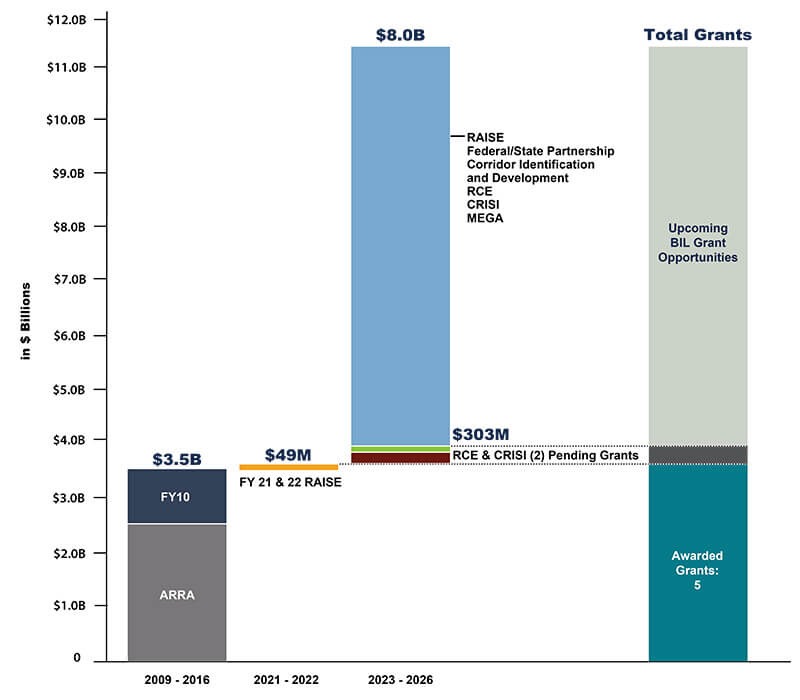Highlights from Chapter 3:
Funding and Costs
This chapter also presents updated cost estimates for the 171-mile high-speed rail segment connecting Merced, Fresno and Bakersfield, as well as a detailed cost estimate for the 119 miles between Madera and Poplar Avenue in the Central Valley where construction is well underway. Cost estimates for Northern and Southern California, including an updated estimate for the San Francisco to San José project section, are presented, as is a revised estimate for the full 500-mile system linking San Francisco to Los Angeles/Anaheim.
Currently Available, Authorized and Future Funding

Text description of Currently Available, Authorized and Future Funding
Overview
This chart provides an overview of the current and projected funding available to the program through 2030. It provides a summary overview and component elements of the available funding. The total amount of identified revenue for the capital program is currently estimated in the range of $23.5 billion to $25.2 billion, assuming a Cap-and-Trade annual revenue range of $750 million to about $1.0 billion per year.
$17.4 billion in currently available funds includes $3.5 billion in ARRA, FY 10, RAISE and brownfields federal dollars, $5.4 billion Cap-and-Trade actual funding through Nov. 2022 and $8.5 billion Prop 1A appropriated funds. Future Cap-and-Trade funding ranges from $6.0 billion to $7.7 billion. There is an $8.0 billion target for future federal grant dollars.
Key Facts
The total amount of identified revenue for the capital cost program is currently estimated in the range of $23.5 billion to $25.2 billion, assuming a Cap-and-Trade annual revenue range of $750 million to $1.0 billion per year.

Text description of Summary of Federal Funding Roadmap
Overview
The Authority’s federal funding roadmap summarizes the federal grants received to date and the target for new federal funding under the BIL grant opportunities through 2026. It shows $3.5 billion received from 2009 through 2016 from two past primary funding programs ARRA and FY10. Over the last two years another $49 million has been received from two RAISE grant awards. The goal is to reach up to an additional $8.0 billion through multiple federal awards from future RAISE, Federal/State Partnership, Corridor Identification and Development, RCE, CRISI and MEGA grant programs under the BIL. Currently, $303 million has been requested under pending RCE and CRISI grant opportunities.
The California High-Speed Rail Authority makes every effort to ensure the website and its contents meet mandated ADA requirements as per the California State mandated Web Content Accessibility Guidelines 2.0 Level AA standard. If you are looking for a particular document not located on the California High-Speed Rail Authority website, you may make a request for the document under the Public Records Act through the Public Records Act page. If you have any questions about the website or its contents, please contact the Authority at info@hsr.ca.gov.

